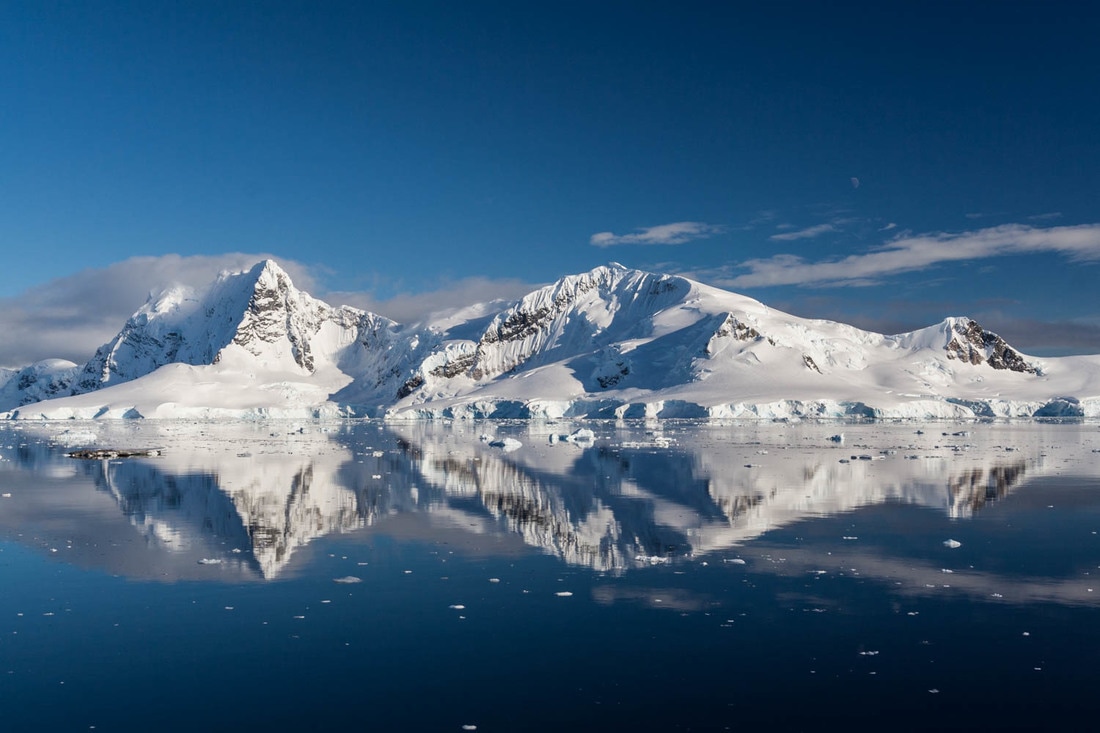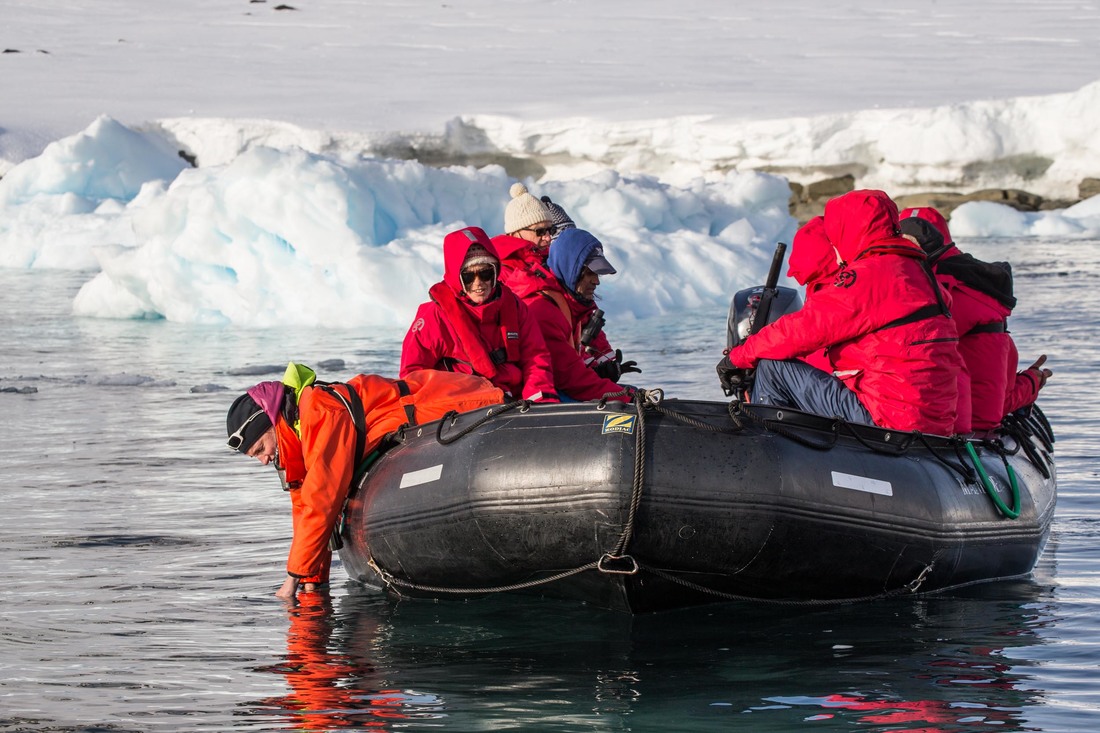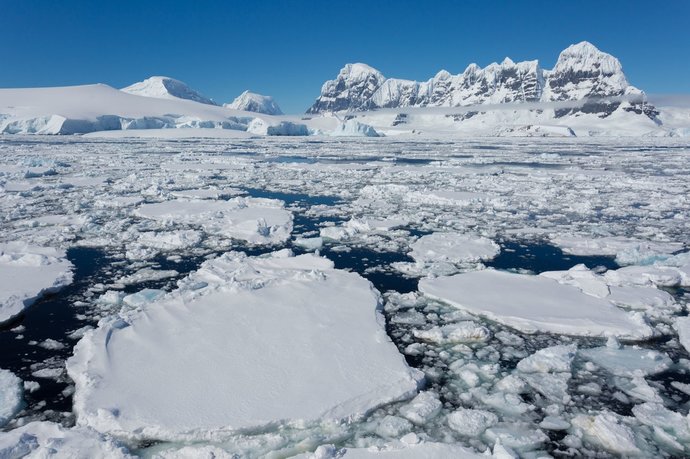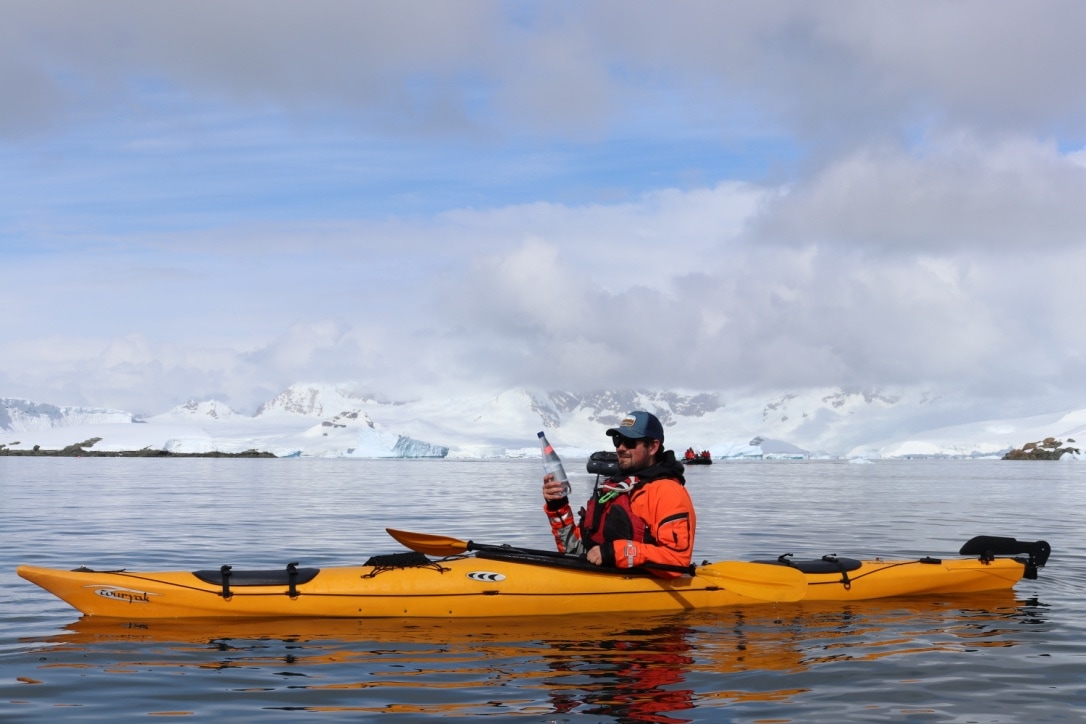By: Annette Bombosch
Expedition Guide and Citizen Science Coordinator for G Adventures and Polar Latitudes
Expedition Guide and Citizen Science Coordinator for G Adventures and Polar Latitudes
I will never forget the first time I stepped on the ice. Immediately, I was overwhelmed by the vastness of this place. In every direction I looked there were mountains covered in ice and snow. Glaciers flowed all the way down to sea level, calving off beautiful icebergs in all shapes and colors – from pure white to all shades of blue. Antarctica seemed endless, and left me feeling surprisingly peaceful. This icy continent continues to captivate me and I feel very privileged to work here as an expedition guide.
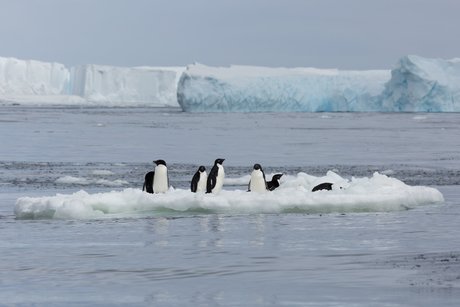 Adélie penguins on an ice floe with tabular icebergs floating in the distance. Photo by: Annette Bombosch
Adélie penguins on an ice floe with tabular icebergs floating in the distance. Photo by: Annette Bombosch
Antarctica is raw and pure. She alone dictates what we can and cannot do. The penguins, seals, and whales are perfectly adapted to these harsh conditions, whereas we humans need to wrap up in many warm layers to stay comfortable and hurry back to the comforts of the ship after a short while ashore.
Antarctica is the largest wilderness on Earth, still considered nearly untouched by humans. A visit rewards every traveler with so much that quite often our guests wish to give something back to the icy continent.
During my first trip this season on board G Expedition we experienced some amazing but challenging conditions sailing through the Antarctic Sound. Beautiful sunshine contrasted with howling 60-knot winds and 100-foot tabular icebergs that floated by while we tried Plan A, then Plan B, and eventually Plans Y and Z to find a suitable landing site. I felt the guests becoming more and more anxious. After hours of sailing and discussions between our expedition leader and the captain we managed to find a sheltered site to depart on a zodiac cruise. The guests and I had lively conversations in my zodiac about how experiences like this demonstrate the stark, powerful beauty of this place that impresses me so much.
How can we give back to a place like Antarctica? I believe that the best way is to help scientists gather valuable data to improve our current understanding of this pristine wilderness. Two of my colleagues and I set up an extensive citizen science program for G Adventures in which we work with guests to report sightings and photograph individual markings of the majestic whales and charismatic seals that we encounter during our trips. We count seabirds soaring above the towering waves of the Drake Passage, and take cloud observations for NASA. I take guests on zodiac cruises, where we obtain profiles of water temperature and salinity, collect phytoplankton samples, weather data, and one-liter water samples to be analyzed for microplastics by Adventure Scientists.
I am especially excited that we are participating in the Adventure Scientists Worldwide Microplastics Initiative in an attempt to fill in sampling gaps from the remote locations of the Southern Ocean. Microplastics, or plastic particles smaller than five millimeters in size, likely pose a massive environmental and human health risk when they enter our waterways.
For most guests it comes as a surprise that microplastics can be found in the remote waters of the Southern Ocean. It stirs discussions as to where this plastic is coming from and what every one of us can do to reduce our human footprint on the Earth and its oceans. Guests from various nationalities describe what is done in their home countries and what every one of us can and should do, such as using reusable shopping bags, bringing our own mugs to coffee shops, saying no to straws in drinks, and even carrying our own cutlery in the handbag to avoid having to use single use plastic cutlery.
I firmly believe that if every one of us takes a little step, together we can protect this incredible place.
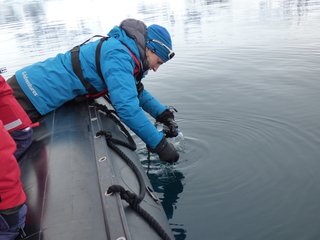 Annette collecting water samples at Danco Island, Antarctic Peninsula. Photo: Osi Shahaf
Annette collecting water samples at Danco Island, Antarctic Peninsula. Photo: Osi Shahaf
Annette Bombosch is a marine biologist by training and working as an expedition guide in the Antarctic on board G Adventures’ expedition ship “G Expedition” and Polar Latitudes’ expedition ship “Hebridean Sky.” During this Antarctic season she, her colleague, and the guests will collect water samples for the Worldwide Microplastics Initiative from different areas along the Antarctic Peninsula.
Find out more about our Global Microplastics Initiative and other Adventure Scientists projects by visiting our website and by following us on Facebook, Twitter and Instagram.

